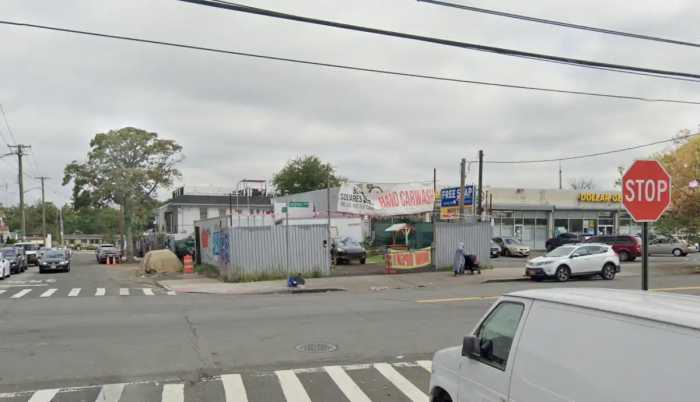By Adam Kramer
“My paintings come from my mind, from my imagination,” said Denis, a 45-year-old artist living in Laurelton. “Just like water comes from the source, my paintings come from my personal inspiration, it comes deep from my heart.”
His paintings tell stories of Haiti and the lives of Haitians living in the countryside on the Caribbean island.
“I live here, but my imagination comes from Haiti,” said Denis, who also owns the Port-o Prince restaurant in Cambria Heights. “It is strictly pure Haitian imagination.”
Denis came to the United States in 1982 to visit New York City, its museums and galleries. He said he wanted to see what artists around the world were producing and to study the great painters like Pollack and Picasso.
Overcome by what he saw, Denis decided New York was where he needed to live and produce art. He said his move to the United States was all about art and had nothing to do with the political situation in his country.
“I was taken over by this feeling that I needed to stay and push my art,” he said. He said he wanted to see if he could take his art to another level.
Once he decided to stay in the United States, Denis found a place to live in Queens Village and got a job in a restaurant to support himself. Denis has only been back to Haiti a few times since he left, but he remains in constant contact with his brother and cousins who live on the troubled island.
He is still involved in the restaurant business as the owner of the Port-o Prince Restaurant because he cannot support himself and his family on just the sale of his artwork.
The neighborhoods of Laurelton and Cambria Heights are home to a large number of Haitian immigrants and their families. Linden Boulevard between Springfield Boulevard and the Cross Island Parkway is filled with Haitian restaurants, barbers and stores.
Even though he spends a good part of his time at the restaurant Denis paints five or six hours a day in his studio in the basement of his house. He is married to a Haitian woman he met in the United States and has a 14-year-old son and two girls, 10 and 6. Denis said all of his children draw and he is teaching them to use watercolors.
Bold reds, blues and greens play an integral role in Haitian art, which burst onto the international art scene in the 1970s when the primitive oils and watercolors caught the attention of serious collectors at auction houses such as Sotheby's in the 1970s.
“Colors are important because in Haiti the sky is a vibrant blue and the green is the tropical country,” Denis said. “People use strong colors because that is what we get, those colors.”
Patrick Wah, who is Denis' manager, curator of the Auction Galleries in Cambria Heights and a painter, said he, Denis and a few other Haitian artists are trying to take Haitian art into a different and new direction. He said they are fighting to move away from the primitive and better-known Haitian art
“In Haiti painters started painting that way because there were no books about art,” he said. “Now we can study art and have money for materials.”
Denis pointed to one of his own paintings on the wall in Wah's studio of a man sitting in a crouched position and a girl bending over toward him.
“This is called 'The First Kiss,'” he said. “The guy sitting is a shoeshine man and the woman sells cornmeal at the outdoor markets. They have been talking for a long time and this is the first time they are going to have a kiss.”
Wah said Denis' paintings are short stories on Haitian life, capturing the philosophy of Haitian life, not the political aspect.
The “First Kiss” has many of the qualities associated with naive Haitian art, but Denis is trying to make his work more sophisticated.
“When I started to paint, I used to paint those faceless market scenes, but I changed,” he said, referring to typical Haitian pictures of crowded outdoor stalls depicted in bright splashes of color. “An artist like me tries to be better and better.”
His paintings are highly stylized. The bold colors are striking, while the elongated figures he paints are always in the forefront of the composition against a backdrop of the Haitian countryside.
Denis started painting in 1972 when he was 17 after a Haitian painter had seen some of his drawings.
“I was a kid and I started to draw with my brothers and an artist saw what I was doing,” he said. “The painter liked it and asked me to start to paint.”
While living in Haiti, Denis sold his work in galleries and even had a show at the Haitian National Gallery, where Denis said they rolled out the red carpet. But he, like many Haitian artists living in New York, have a hard time getting their work into upscale galleries.
“I am working very hard and we have been looking to get into galleries in Soho and make a name in the art world,” Denis said. “I am ready.”




































